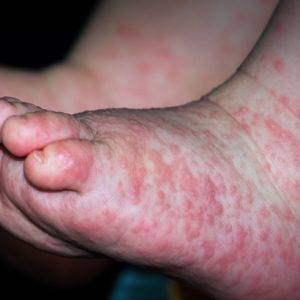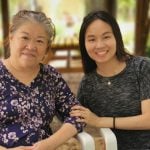The pandemic has become so much a part of our lives that the word no longer strikes fear but rather a sense of acceptance—an acceptance that this will be part of our lives. But what happens when the COVID-19 virus becomes the norm? Prof Datuk Dr Lokman Hakim Sulaiman (in the photo above), Pro Vice Chancellor of Research, International Medical University (IMU) and Director of the Institute for Research, Development, and Innovation (IRDI), talks about how we are evolving from a pandemic to an endemic stage.
There has been much discussion lately about Malaysia entering the endemic phase in terms of COVID-19. The Ministry of Health recently announced that the country is on track to transition into this new phase by the end of October 2021. “When COVID-19 becomes endemic what we are saying is that the infection will not go away and will continue to be transmitted,” Datuk Lokman explains. This is not to say that doom and gloom is our path going forward. Rather, transitioning from a pandemic to an endemic stage is about the community seeing a growing number of people who are immune to the virus, either through surviving natural infection or through vaccinations. “As less and less people are susceptible to the infection, the number of cases will not be as high as before,” Datuk Lokman says. “Effective vaccines will be an important tool as the level of immunity in the population is very important to shift from the pandemic to endemic phase,” he adds. Data from around the world have shown that the COVID-19 vaccines have successfully brought serious cases down and this will help drive us towards an endemic state faster. However, vaccination rates are not the only indicator of endemicity.
A state of Acceptance
Being in an endemic phase means that infection is at a level that is “acceptable or manageable”. “This is a level which does not constitute a major public health problem—i.e. smaller numbers of infection, less hospitalisations, and fewer deaths,” says Datuk Lokman. But what is considered “acceptable”? According to Datuk Lokman, it is a complex and dynamic situation. Several factors will influence this such as the strength and duration of people’s immune protection, transmissibility of the virus itself, healthcare capacities to manage the infection and the public health interventions that are put in place. “It is also dependent on people’s behaviour—how they conduct themselves will either spread the infection or keep it in check,” Datuk Lokman says. There is no prescribed universal level. “There will be variation between countries and each country has to analyse their own circumstances and determine their own criteria for endemicity,” he says. “We have to each ask ourselves what is a number that we are comfortable with?”
| Are we there yet? |
|---|
| Does hitting the endemic stage mean that we have reached the end line and won the race? Unfortunately, says Datuk Lokman, “No. Just as we can move from pandemic to endemic, we can as easily make a u-turn back into an epidemic or pandemic status. New variants can push infections and cases back up to an unacceptable rate,” he explains. He gives the example of how the Delta variant has caused a resurgence of cases in some countries and how other newer variants of concern such as the Lambda and Mu are being closely monitored by the World Health Organization (WHO). He explains that as access to the COVID-19 vaccine is not equal globally, a large proportion of the world population is still susceptible to the infection. “An emergence of a highly infectious variant can trigger a new epidemic which can escalate into a pandemic level in terms of global spread,” he warns. |
From Outbreak to Endemic
To get a clearer picture, let’s take a look at how a disease goes from outbreak to epidemic and pandemic and then to being declared endemic. An outbreak describes a sudden increase in the number of cases in a limited area, either in a place where cases were reported before or in a new area. “For example, in certain months of the year when the number of dengue cases are higher than usual, it’s called a dengue outbreak,” explains Datuk Lokman. If an outbreak grows to affect larger areas with a much higher number of cases, an epidemic is said to have occurred. “An epidemic of dengue occurred in Malaysia in 2014 when the number of cases increased to a record high of almost 110,000 in that year compared to not more than 50,000 cases in the three decades before that,” he says explaining that the terms outbreak, epidemic, pandemic and endemic are not just used for infectious diseases but other health conditions too. A pandemic, as we know, is an epidemic that has spread globally such as COVID-19. Previous examples would be the Spanish Flu in 1918 which caused the deaths of more than 50 million people. More recently, just over ten years ago, the Influenza H1N1 pandemic affected the whole world over a short period of time. H1N1 is now endemic in many countries and its occurrence is fairly stable. Helping us to visualise what living with COVID-19 endemicity will be like, Datuk Lokman says: “Think about it like dengue and malaria which are both endemic in Malaysia and where cases are reported regularly every year.”
Zero COVID-19 vs endemic
Hoping to reach a similar end to the infections, some countries such as New Zealand have adopted a zero COVID-19 strategy–where lockdowns and strict travel parameters aim to completely wipe out the virus. But most countries have accepted that public health interventions alone are never going to stop infections. “In an endemic state, what we are looking at is public responsibility to help manage the disease. The public must continue to be educated on the importance of risk assessment and management so that they will take appropriate action to minimise the risk of being infected and infecting others,” says Datuk Lokman. However, while nationwide lockdowns will be phased out, other measures will need to be pushed forward such as the strengthening of the healthcare system to adequately deal with the continuous threat of the infection. “Remember, even if we have entered an endemic phase, an epidemic can still occur.” The way we look at the daily case statistics will also need to change and be focussed on the number of high-risk cases rather than total numbers of infected. “We already see this happening where numbers are broken down in the various risk categories,” says Datuk Lokman. “This will give us a better idea of whether our health systems are overwhelmed or not.”
| Boosting Immunity |
|---|
| Will booster shots help us to stay in the endemic zone? Datuk Lokman explains that it depends on the efficacy of the vaccine and the epidemiological pattern–how it spreads and what factors affect the spread–of infection in a given population. “Transmission risk is not equal in all areas and countries. Therefore, each country needs to study the pattern of the infection and the performance of the vaccines being used. We need to understand our own situation and decide whether we need boosters, when or how often.” There is also the ever-prevalent moral and ethical quandary of whether one should start giving boosters when there are many who are still waiting for their first dose. As Datuk Lokman says, “Many countries have yet to achieve a reasonable vaccination coverage, while some developed countries are already stock-piling vaccines for booster doses.” He adds that the development of an effective treatment or drug for COVID-19 is also important to further enhance the management of this pandemic. “Effective drugs will clear the virus and reduce the source of infection to other people. An effective treatment may even change the vaccination strategy.” |
Getting on with life
The good news for the people is that in an endemic state, you can expect to go back to an almost normal, or new normal, routine. Datuk Lokman explains: “The infection itself is still evolving, and there are still many uncertainties. Public health measures will still need to be continued. Masking, social distancing, crowd control and improvement in ventilation must continue to be implemented in areas where transmission is still active.”
Yes, life needs to go and an endemic state will help us do that. But, as Datuk Lokman reminds us: “Until such a time when we understand this infection better, we cannot let our guard down.”
| In the News | ||
|---|---|---|
| 26 November | Sin Chew | From Pandemic to Endemic, Level of Herd Immunity is Key |
| 7 October | The Malaysian Reserve | Public urged to maintain SOPs in endemic phase |
| 2 October | DailyStraits | Life After The Pandemic |
| 22 October | The Iskandarian | Endemic: Accepting a Life Together |
| 14 October | Harian Metro | Mengharungi Fasa Endemik |
| 29 September | Sarawak Tribune | What is considered acceptable endemicity? |
| 29 September | Sarawak Tribune | A public health expert’s view on booster shots |
| 28 September | Code Blue | What Endemic Covid-19 Means |









